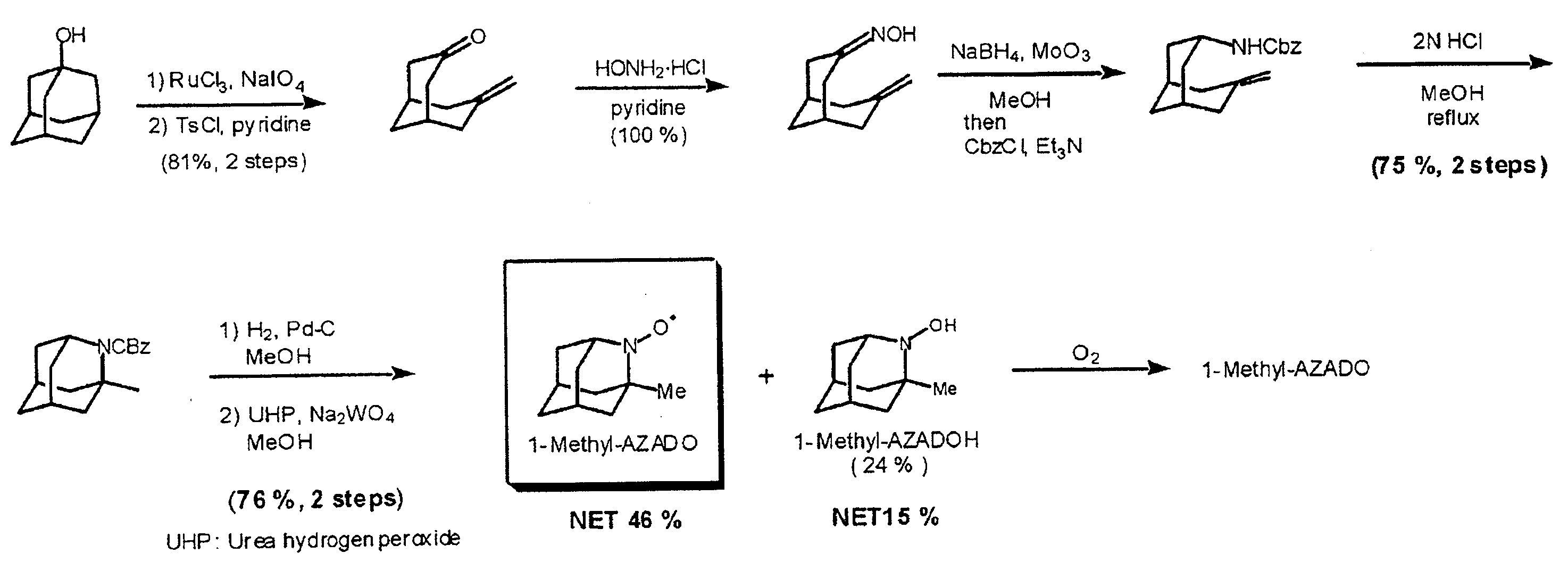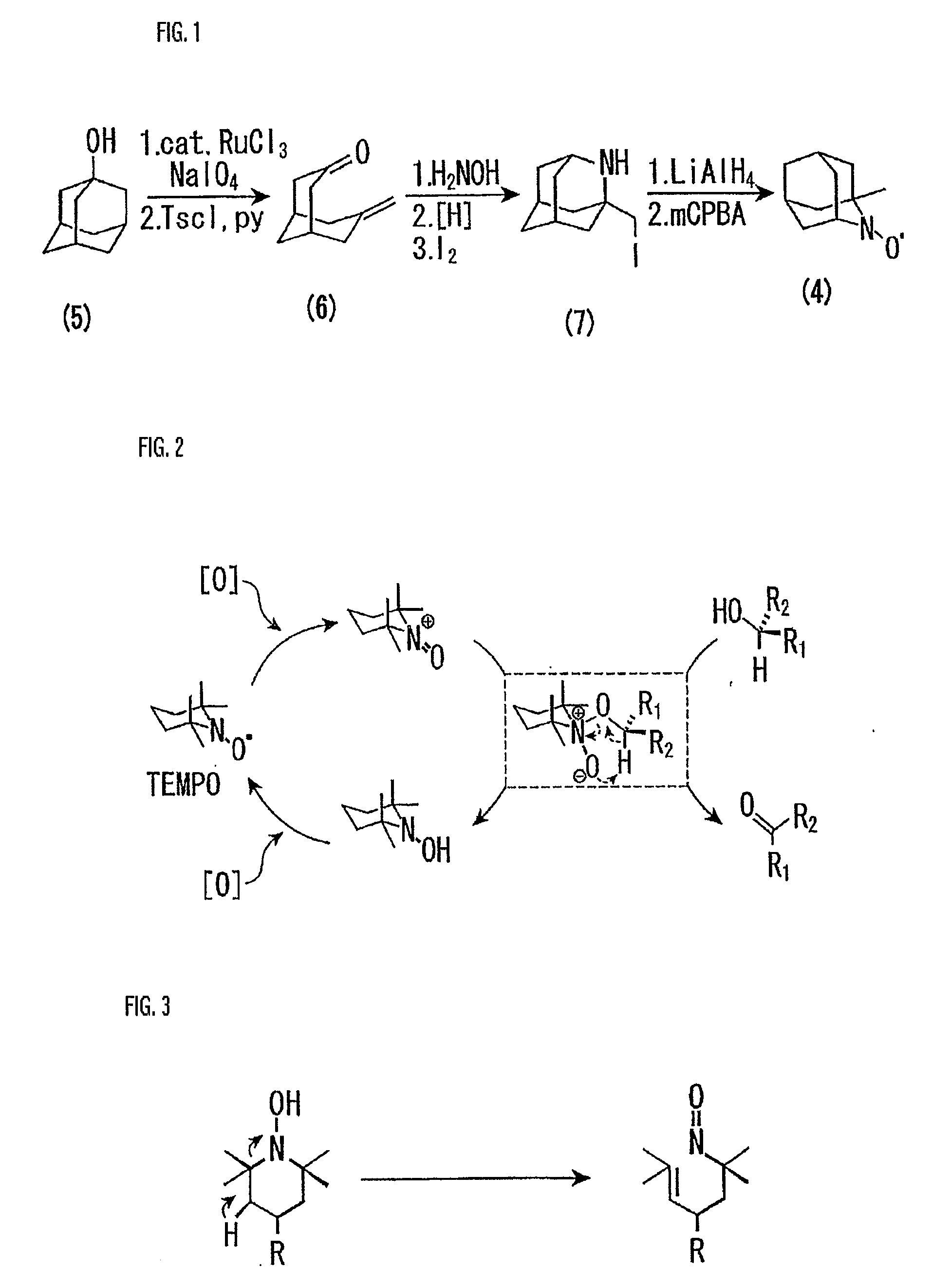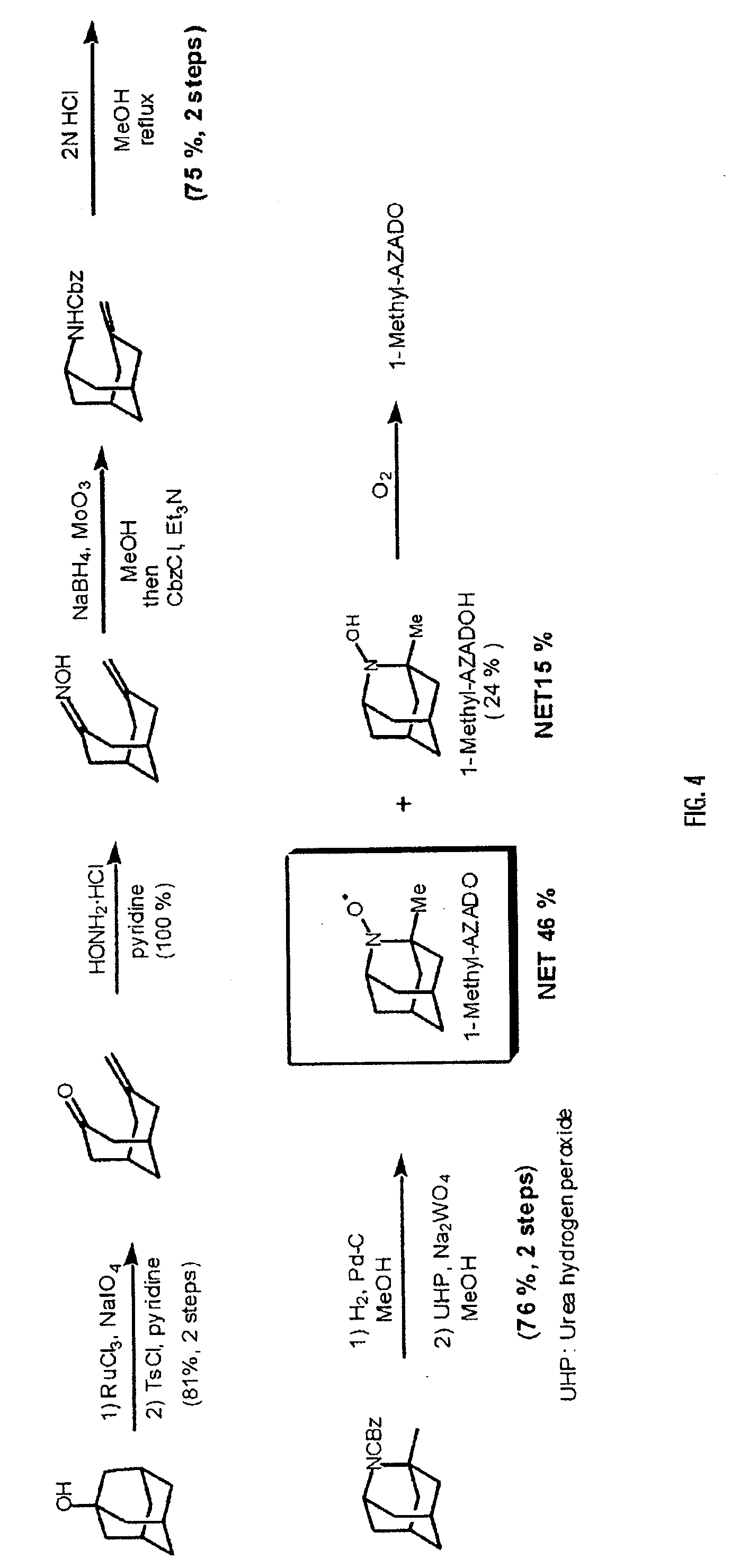Alcohol Oxidation Catalyst and Method of Synthesizing the Same
a technology of alcohol oxidation and catalyst, which is applied in the field of organic oxidation catalyst, can solve the problems of affecting the quality of organic compounds, difficult preparation or handling of heavy metal-containing reagents, and relatively difficult performance, and achieves the effects of reducing the risk of contamination
- Summary
- Abstract
- Description
- Claims
- Application Information
AI Technical Summary
Benefits of technology
Problems solved by technology
Method used
Image
Examples
example 1
[0068] A starting material used herein was 1-adamantanol. To a solution (123 ml) of 1-adamantanol (50.4 mmol) in CH3CN—CCl4—H2O (3:3:1 v / v) was added NaIO4 (116 mmol) and RuCl3 (0.5 mmol) stepwise, and the mixture was reacted with stirring at 60° C. for 7 hours. The resultant reaction mixture was extracted and dried to give a crude diol product. Then, without further purification of this diol, TsCl (77 mmol) was added to a solution (150 ml) of the diol in benzene-pyridine (1:1 v / v), and the mixture was reacted with stirring at 70° C. After extraction and drying, the resultant residue afforded a bicyclo compound.
[0069] Then, the resultant bicyclo compound was used as a key starting material. Thus, HONH2—HCl (50 mmol) was added to a pyridine solution (38 ml) of the bicyclo compound (25 mmol), and the mixture was reacted with stirring for 4 hours, then extracted, washed and dried. Thereafter, the resulting residue gave a corresponding oxime. To a MeOH solution (250 ml) of the oxime (2...
example 2
[0071] To a solution of 1-adamantanol (20 g, 131 mmol) in CH3CN—CCl4—H2O (120 ml, 3:3:1 v / v) was added stepwise NaIO4 (67 g, 302 mmol) and RuCl3 (540 mg, 1.3 mmol), and the resulting mixture was stirred vigorously at 60° C. for 7 hours. To the mixture was then added stepwise 10% Na2S2O3 and aqueous NaHCO3, and the mixture was extracted with AcOEt. The organic layer was dried over MgSO4 and evaporated under reduced pressure to give a crude 1,3-adamantanediol (2; 19.6 g). This compound was used in the next reaction step without purification. To a solution of the crude diol 2 in benzene-pyridine (200 ml, 1:1 v / v) was added p-TsCl (56 g, 290 mmol), and the mixture was stirred at 70° C. After confirming that the reaction was completed, H2O was added and the resulting mixture was extracted with Et2O. The organic layer was washed with brine, dried over MgSO4, and evaporated under reduced pressure. The residue was subjected to silica gel column chromatography to give a white solid ketone, 7...
example 3
[0076] Using 1-methyl-AZADO thus-synthesized, the activities thereof as an oxidation catalyst were first checked with the primary alcohols shown in Table 1. As for the reaction conditions, the catalyst was used in each amount specified in Table 1 in CH2Cl2, and KBr (0.1 eq.), n-Bu4NBr (0.05 eq.) and NaCl (1.4 eq.) were further added, and the reaction was carried out under ice cooling. The reaction time was 20 minutes. After completion of the reaction, the percent yield of each product was determined. The percent yield was calculated by the formula: (actual yield, i.e., the amount of product) / (theoretical yield, i.e., calculated from the amount of consumed starting material)×100 (%). For comparative examples, runs were carried out under the same reaction conditions using TEMPO, and each comparative yield was calculated. The results thus obtained are shown in Table 1.
TABLE 1Yield (%)CatalystTestMe-AZADOTEMPONo.Alcohol speciesEquivalent(Invention)(Compar. Ex.)1-10.0189911-20.0197971-...
PUM
| Property | Measurement | Unit |
|---|---|---|
| Fraction | aaaaa | aaaaa |
| Fraction | aaaaa | aaaaa |
| Fraction | aaaaa | aaaaa |
Abstract
Description
Claims
Application Information
 Login to View More
Login to View More - R&D
- Intellectual Property
- Life Sciences
- Materials
- Tech Scout
- Unparalleled Data Quality
- Higher Quality Content
- 60% Fewer Hallucinations
Browse by: Latest US Patents, China's latest patents, Technical Efficacy Thesaurus, Application Domain, Technology Topic, Popular Technical Reports.
© 2025 PatSnap. All rights reserved.Legal|Privacy policy|Modern Slavery Act Transparency Statement|Sitemap|About US| Contact US: help@patsnap.com



